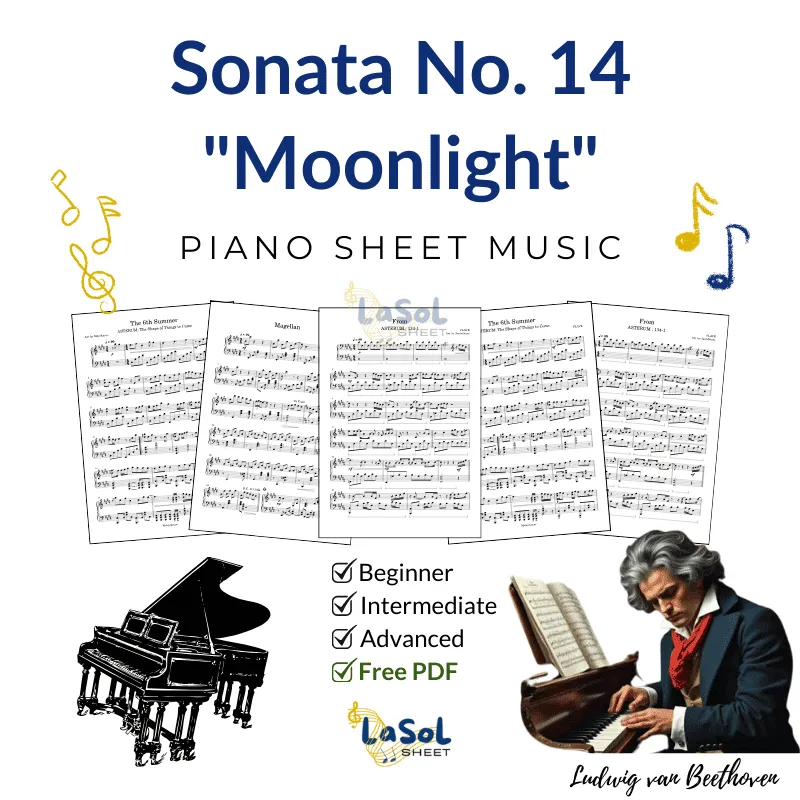Sonata No. 14 “Moonlight” 1st Movement Piano Sheet Music
SCORE INFO
- Arrangement: Ludwig van Beethoven
- Format: Digital sheet music
- Instrument: Piano sheet music
- Scoring: Piano solo
- Skill Level: Easy
- Style: Classical
- Key Signature: C♯ minor
- Time Signature: 4/4
- Metronome: 40
- Pages: 5
- Note Range: (updating)
- Measures: 69
- Copyright: Public domain
SHEET MUSIC & VIDEO TUTORIAL
SCORE INFO
- Arrangement: ClassicMan
- Format: Digital sheet music
- Instrument: Piano sheet music
- Scoring: Piano solo
- Skill Level: Intermediate
- Style: Classical
- Key Signature: E major, C♯ minor
- Time Signature: 2/2
- Metronome: 44
- Pages: 4
- Note Range: (updating)
- Measures: 69
- Copyright: Public domain
SHEET MUSIC & VIDEO TUTORIAL
Download Sonata No. 14 “Moonlight” 1st Movement Sheet Music File PDF for FREE
Short Produce About Sonata No. 14 “Moonlight” 1st Movement
“Sonata No. 14 ‘Moonlight’ 1st Movement” by Ludwig van Beethoven is one of the most iconic and emotionally evocative piano compositions in classical music. Officially titled Piano Sonata No. 14 in C-sharp minor “Quasi una fantasia”, this piece was completed in 1801 and later dedicated to Beethoven’s student, Countess Giulietta Guicciardi.
The first movement, marked Adagio sostenuto, is renowned for its hauntingly beautiful melody and gentle, dreamlike rhythm. Unlike the typical fast-paced openings of classical sonatas, Beethoven chose to begin this sonata with a slow, meditative atmosphere that resembles an improvisation. This unconventional choice contributed to the piece’s deep emotional impact and lasting popularity.
The nickname “Moonlight Sonata” was not given by Beethoven himself but was coined years later by German poet Ludwig Rellstab, who described the movement as resembling moonlight shining on Lake Lucerne. Since then, the name has remained a fitting metaphor for the movement’s tranquil, mysterious mood.
Whether you’re a pianist or a music lover, the first movement of Moonlight Sonata offers a timeless experience filled with introspection and lyrical beauty. It’s a masterpiece that continues to move listeners more than two centuries after its creation.


















